About Padded liners and caps
This section represents padded liners and caps. Here you can find different models of padded headwears, which were worn separately or under the helmets.
Every item is handmade according to historical patterns. We sew caps and liners by individual parameters and regards of customer.
To order the wished model of padded under armour, you need to do few simple steps:
- Open the page of required item;
- Choose material and colour (for example, black linen or brown leather).
Once all options are chosen, add item to cart and make a payment. Then our manager will contact you with measurement request and specification of order’s details.
If any difficulties with choosing arose, please do not hesitate to contact us. If you did not find required padded accessory in this section, we can make it individually for you. Just send picture with detailed description to [email protected], so we could quote you and discuss details of order.
There are no doubts, that knights were wearing heavy helmets and mail coifs only over the padded fabric headwear. Such cap could be made of thick felt or few quilted layers of cotton, linen or wool. Padded liners came into use starting the XIV century.
Quilted headwear had several functions at the same time. The most important thing was an amortizing of the power of blow. Helmet with padded inset was fitting better, did not press the head, and did not chafe against the skin. In addition, armour was not getting rusty because of blood and sweat.
Caps and hoods of different cut and design were worn as liners for helmets. Besides, knights were using separate padded ring-shaped roll.
Illustrations in “The Morgan Bible” shows warriors wearing padded caps. Such headwear (also known as cale) was widespread both in everyday life and as protective clothing element. Cap was fixed under the chin with long straps. Cale could be used with knight helmets of different models.
Helmets of type burgonet, armet or topfhelm (especially, its late variation “Sugarloaf helmet”) required another model of liner, which could cover the chin. Crafters were making special padded liner and sewing it inside the helmet. Some museum copies of helmets have small holes for lacing on the forehead and back of the head of dome.
To avoid pressure of the plate bevor on the shoulders, knights were wearing padded hoods with pelerine. This element had not only protective, but also decorative function. Thread of quilting could make beautiful pattern. Some pelerines were sewn of brighter and more expensive fabrics, than a liner, and could have heraldic colour combination.

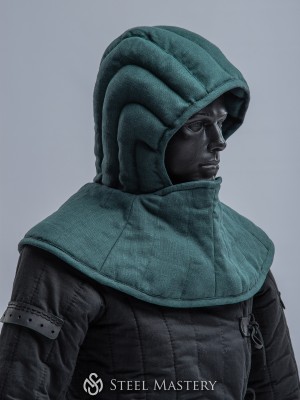
-0-1-0-1-1-300x400.jpg?v=1746523880)
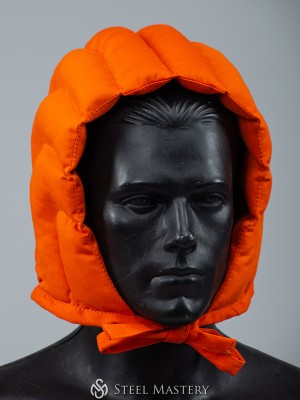
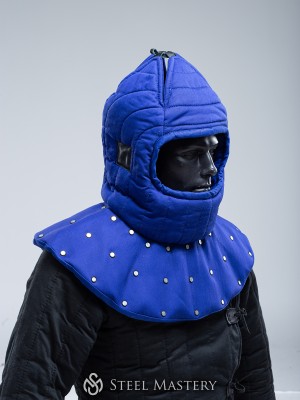
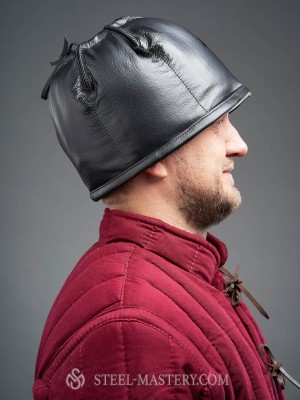
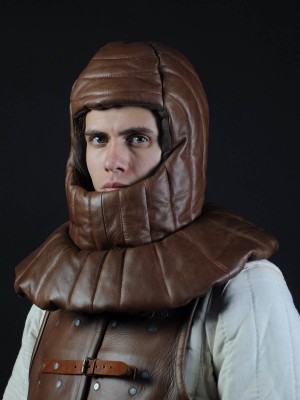
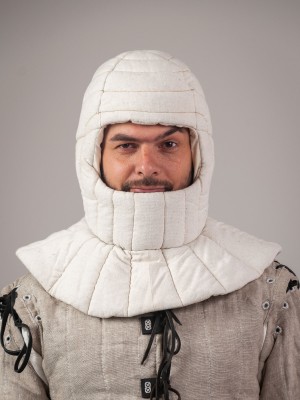
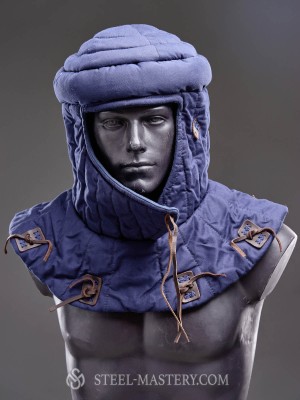
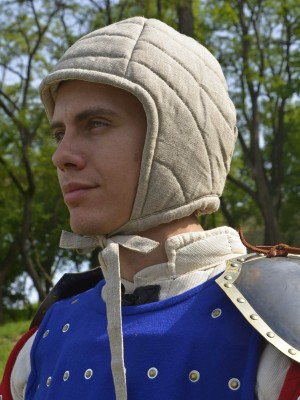
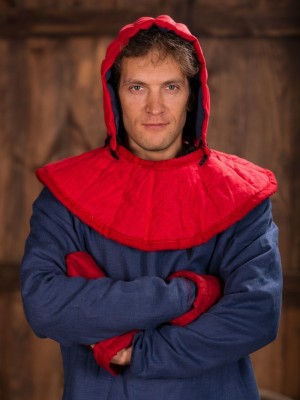
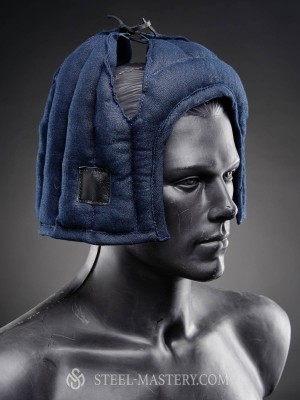
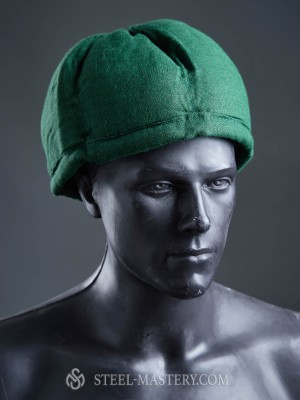
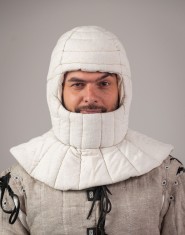
-0-1-1-185x235.jpg)
